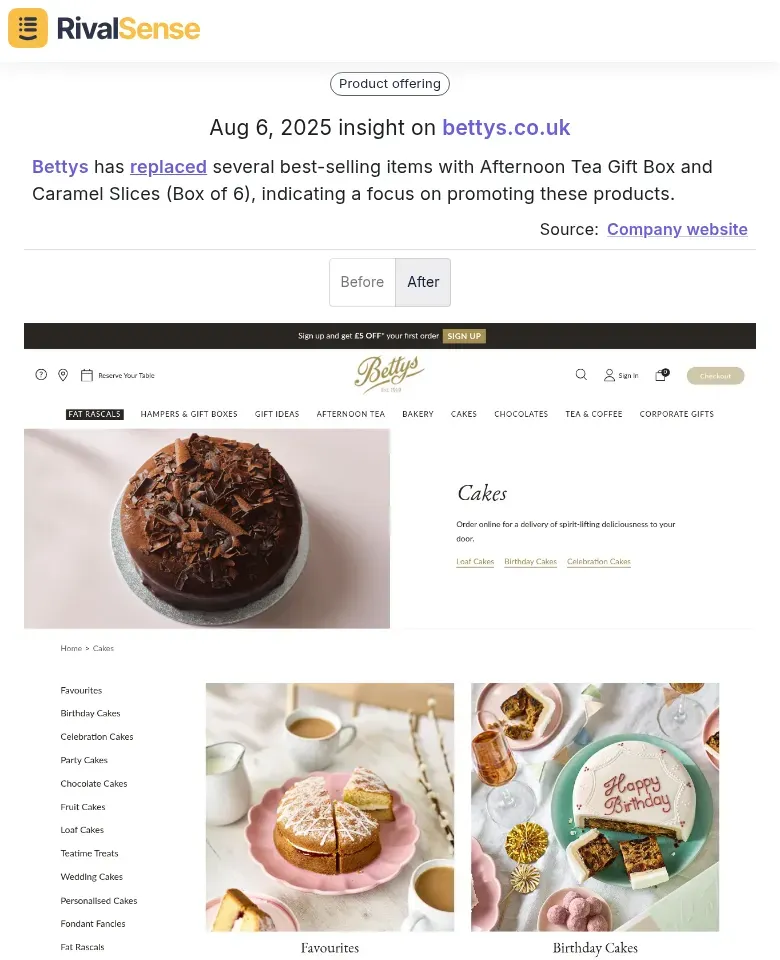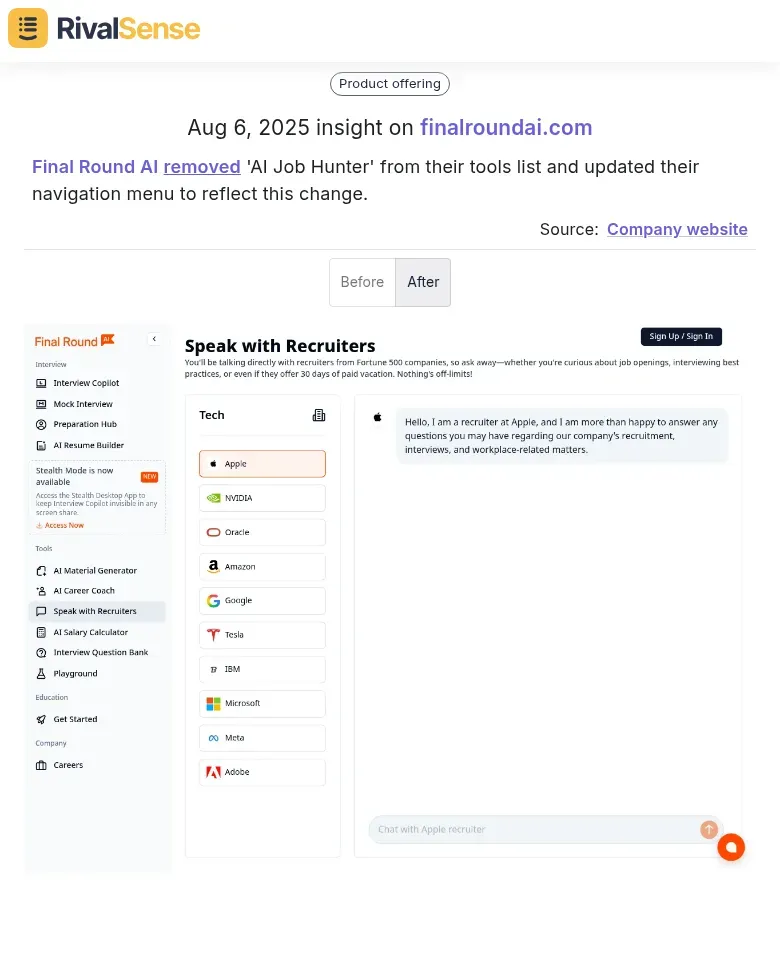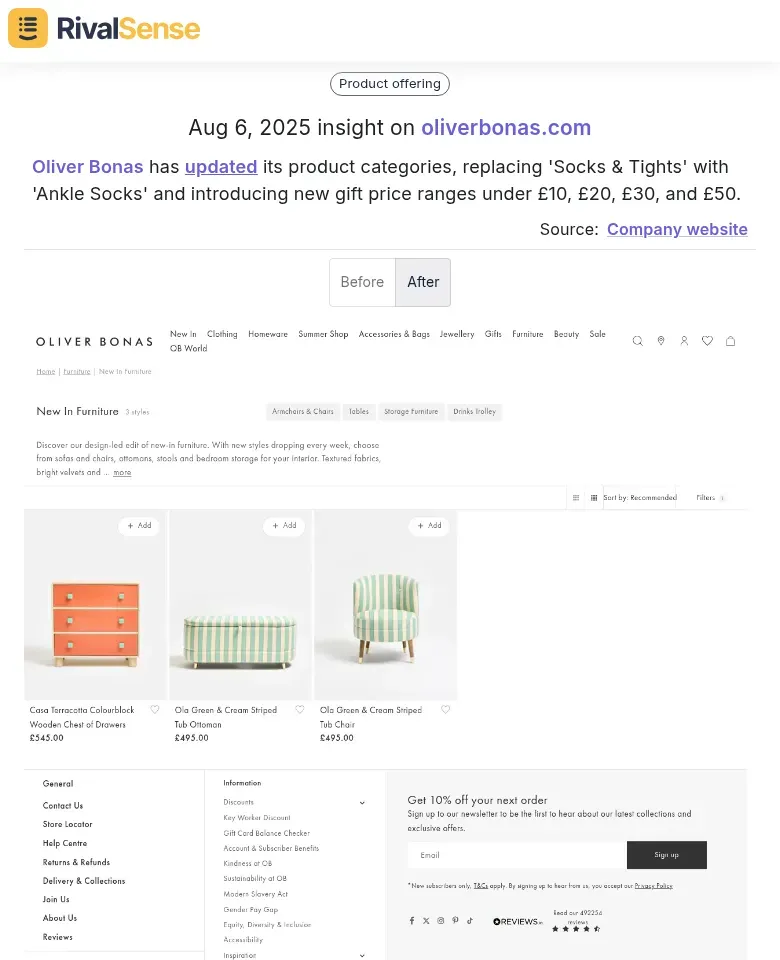Advanced Tactics: Decoding Competitor Product Lobbying Insights
In the fast-paced world of B2B markets, staying ahead means not just innovating but also understanding the moves of your competitors. 'Competitor Product Lobbying Insights' refers to the strategic analysis of how competitors adjust their products in response to market demands, regulations, or technological advancements. Every product update or feature addition by a competitor is a signal—a clue to their priorities and market direction.
Why It Matters: By decoding these signals, you can anticipate market shifts, identify gaps in your own offerings, and uncover new opportunities for innovation. Product lobbying insights allow you to benchmark your product development against competitors, ensuring you're setting the pace rather than just keeping up.
Types of Insights to Expect: We'll explore how to track competitor product updates, interpret strategic intent, and leverage this knowledge to refine your roadmap. Practical steps include setting up alerts, analyzing feedback, and integrating findings into planning.
🚀 Quick Checklist to Get Started:
- Identify key competitors to monitor
- Use tools to track product updates
- Analyze context and potential impact
- Incorporate findings into strategy meetings
Understanding competitor moves is about strategic agility, not imitation.
Analyzing Product Line Adjustments
Tracking when competitors add or remove products reveals critical market intelligence. Such changes signal shifts in demand, technological pivots, or strategic refocusing that could impact your positioning. For example, a competitor sunsetting products might indicate market saturation or emerging alternatives.
Consider Bettys: RivalSense detected they replaced best-selling items with Afternoon Tea Gift Box and Caramel Slices, signaling a deliberate shift toward premium gifting.

This insight is invaluable—it exposes competitor priorities, helping you spot gaps to fill or trends to capitalize on. Notice how removals often precede new strategic focuses.
Key Insights:
- Additions = Market expansion or innovation bets
- Removals = Focus tightening or sunsetting underperformers
📝 Practical Steps:
- Monitor announcements via press releases and social media
- Analyze customer reactions in reviews/forums
- Adjust your lineup—fill gaps left by competitors
- Automate tracking with competitive intelligence tools
Always benchmark your offerings against competitor movements to maintain relevance.
Decoding Menu and Navigation Updates
Navigation changes directly impact user experience and conversions. A streamlined menu reduces friction, guiding users to high-value pages while boosting SEO through cleaner site architecture. Competitors who simplify navigation often see improved engagement metrics.
Final Round AI exemplifies this: RivalSense observed they removed 'AI Job Hunter' from tools and updated their navigation, signaling a strategic product pivot.

Tracking such updates matters—they reveal how competitors prioritize offerings and optimize user journeys, helping you refine your own site structure before customer drop-off occurs.
🛠️ How to Optimize Your Navigation:
- Audit current menus: Identify low-traffic items
- Simplify: Limit top-level items to 5-7 clear categories
- Prioritize: Place high-conversion pages prominently
- Test: A/B different structures using heatmaps
- Mobile-optimize: Ensure touch-friendly navigation
💡 Pro tip: Use descriptive labels (e.g., "Enterprise Solutions" not just "Products") and add search functionality.
Understanding Product Category Rebranding
Rebranding categories like shifting from 'Socks & Tights' to 'Ankle Socks' targets specific audiences and aligns with trends. This tactic improves discoverability, attracts niche segments, and differentiates offerings in crowded markets. Narrower categories often signal intent to dominate sub-segments.
Oliver Bonas demonstrated this by replacing 'Socks & Tights' with 'Ankle Socks' while introducing gift price tiers—a dual strategy for segmentation and gifting appeal.

Monitoring category shifts provides early warnings about market repositioning. It reveals how competitors reinterpret customer needs for better targeting.
🔍 Implementation Strategy:
- Track competitor category changes monthly
- Identify gaps/overlaps in your own taxonomy
- Survey customers on category clarity
- A/B test new category names in small markets
- Align rebranding with SEO keyword research
Strategic rebranding strengthens market positioning when backed by competitor insights.
Leveraging Price Range and Gift Strategy Insights
New price tiers psychologically segment buyers—categories like "under £20" attract budget shoppers while premium tiers justify higher value. Gift bundling, especially seasonally, boosts average order value and attracts impulse buyers. Competitors often use these tactics to capture specific spending behaviors.
Oliver Bonas' introduction of £10-£50 gift ranges (shown above) exemplifies targeted price bracketing. Such moves reveal how competitors balance accessibility with premium positioning.
🎯 Actionable Tactics:
- Map competitor pricing: Identify gaps between tiers
- Develop gift bundles: Add exclusivity (e.g., limited packaging)
- Test psychological anchors: "£49 vs £50" pricing
- Seasonal alignment: Launch gift sets 60 days before holidays
📌 Checklist for adaptation:
| Step | Action |
|---|---|
| 1 | Benchmark 3 key competitors' pricing |
| 2 | Identify your unique value per tier |
| 3 | Create bundles matching customer gifting occasions |
| 4 | Monitor sales data to refine quarterly |
Always maintain brand consistency when adapting competitor strategies.
Conclusion: Turning Insights into Action
Decoding competitor moves unlocks strategic advantages: anticipating shifts, identifying gaps, and refining your roadmap. Consistently analyzing product changes, navigation updates, and rebranding reveals market trajectories before they mainstream. The key is systematizing these insights into your planning cycle.
🔁 Integration Framework:
- Categorize insights into:
- Product development
- Pricing strategy
- UX optimization
- Prioritize actions aligning with business goals
- Review quarterly: Measure impact on KPIs
✅ Maintenance Checklist:
- Update competitor profiles bi-weekly
- Set automated alerts for key changes
- Dedicate 15 minutes weekly to insight review
- Share findings across product/marketing teams
Continuous monitoring builds agility—you'll pivot faster as markets evolve.
🚀 Ready to decode competitors? Try RivalSense for free and get your first competitor report today. Track product launches, pricing changes, and strategic pivots—all delivered in actionable weekly insights.
📚 Read more
👉 Leyland's Paint Expansion: How to Respond and Stay Competitive
👉 Competitor Capability Assessment: A Step-by-Step Guide to Outperforming Your Rivals
👉 Advanced Tactics for Tracking B2B Dropshipping Competitors
👉 How Aeschbach's Expansion Prompted Rival Strategy Shifts
👉 Master Competitor Insights: Track Roadmap Signals for Strategic Advantage
